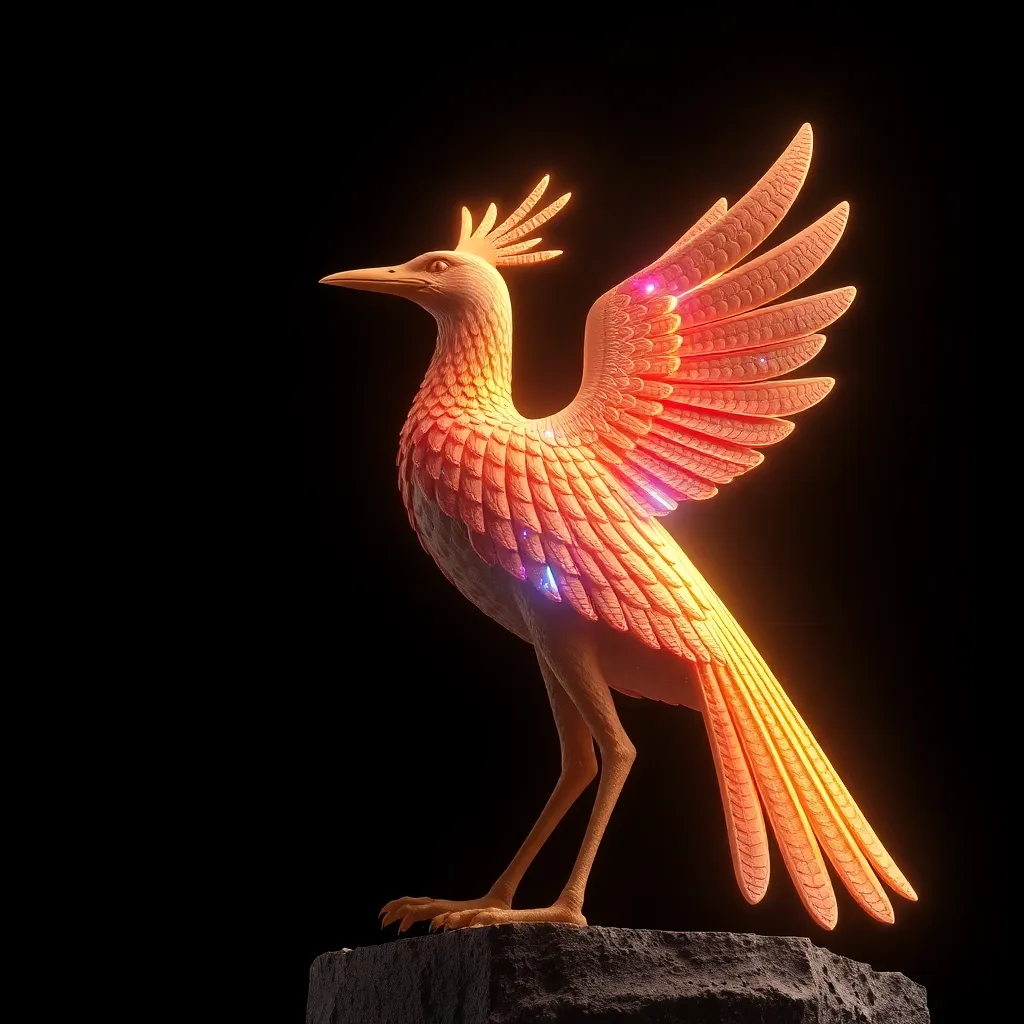The Bennu Bird: A Mythical Representation of the Soul
I. Introduction to the Bennu Bird
The Bennu Bird, a prominent symbol in ancient Egyptian mythology, represents not only the concept of rebirth but also the profound nature of the soul. This mythical bird is intricately linked to the sacred narratives of the ancient Egyptians, embodying themes of resurrection and eternal life. Its origins can be traced back to the early dynastic periods, where it held a significant place in the spiritual framework of Egyptian culture. As a representation of the soul, the Bennu Bird serves as a powerful metaphor for the human experience of life, death, and renewal.
II. Historical Context and Cultural Significance
The Bennu Bird played a vital role in ancient Egyptian religion, often associated with the sun god Ra and the cycle of life and death. It was believed to have emerged from the primordial waters of Nun at the beginning of time, symbolizing creation and the eternal cycle of life. The bird’s significance is further highlighted in texts such as the Pyramid Texts and the Coffin Texts, which emphasize its connection to the afterlife.
When compared to other mythological birds across various cultures, the Bennu Bird shares similarities with the Greek Phoenix. Both birds symbolize rebirth, but the Bennu is often more closely associated with the sun and regeneration within the context of the Nile’s annual flooding, which brought fertility to the land. In ancient texts, the Bennu Bird stands as a powerful emblem of immortality, representing the cyclical nature of existence.
III. Physical Description and Iconography
The physical appearance of the Bennu Bird is described in various ancient texts and artifacts. Typically depicted as a heron or a crane, the Bennu is characterized by its striking plumage that shines with golden hues. This radiant appearance is often complemented by a long, elegant neck and a distinctive crest.
- Symbolic Elements: The Bennu Bird is frequently associated with the sun and life, often depicted rising from flames or surrounded by rays of light.
- Hieroglyphics: In ancient Egyptian hieroglyphs, the Bennu is represented by a unique symbol, which can be found in various inscriptions relating to the afterlife and resurrection.
IV. The Bennu Bird and the Concept of the Soul
In ancient Egyptian beliefs, the soul was a complex entity made up of several components, including the Ka (vital essence), Ba (personality), and Akh (spiritual transformation). The Bennu Bird serves as a profound metaphor for these aspects of the soul, illustrating the journey of life and the transition into the afterlife.
The journey of the soul after death was often likened to the flight of the Bennu, symbolizing the hope of rebirth and the continuity of existence. In this context, the Bennu Bird embodies the resilience of the soul, highlighting the belief in regeneration and the eternal nature of life.
V. The Bennu Bird in Modern Interpretations
In contemporary culture, the Bennu Bird has experienced a resurgence of interest, inspiring various forms of literature, art, and media. This mythical creature resonates with themes of rebirth, transformation, and the quest for meaning in life.
Modern spirituality and psychology often interpret the Bennu Bird as a symbol of personal growth and renewal. It serves as a reminder of the potential for change and the ability to rise from adversity, mirroring the ancient beliefs surrounding the soul’s journey.
VI. The Bennu Bird and Environmental Symbolism
Beyond its spiritual significance, the Bennu Bird also embodies ecological renewal. In recent years, contemporary movements have sought to link mythology with environmentalism, using the image of the Bennu to promote sustainability and awareness of ecological issues.
The Bennu Bird’s association with renewal and regeneration can inspire efforts to restore natural habitats and protect endangered species. By embracing the symbolism of the Bennu, individuals and communities can foster a deeper connection to the environment and advocate for sustainable practices.
VII. Comparative Mythology: The Bennu Bird and Other Soul Symbols
The Bennu Bird shares notable similarities with other mythical creatures, particularly the Phoenix, which also symbolizes rebirth and immortality. Both birds are linked to the sun, shedding light on universal themes of life, death, and transformation.
- Cross-Cultural Comparisons: Various cultures have their own representations of the soul and rebirth, such as the Zoroastrian concept of the Simurgh and the Hindu myth of Garuda, highlighting the global relevance of these themes.
- Universal Themes: The stories surrounding these mythical birds often convey lessons on resilience, the cyclical nature of life, and the ultimate triumph of the spirit.
VIII. Conclusion: The Enduring Legacy of the Bennu Bird
In conclusion, the Bennu Bird stands as a powerful symbol of the soul, embodying themes of rebirth and immortality across time and culture. Its significance in ancient Egyptian mythology continues to resonate in today’s spiritual and environmental dialogues, reminding us of the interconnectedness of life and the importance of renewal.
The legacy of the Bennu Bird invites reflection on our own journeys, encouraging us to embrace transformation and seek renewal in our lives. As we navigate the challenges of the modern world, the symbolic power of the Bennu Bird serves as a guiding light, inspiring hope and resilience in the pursuit of a meaningful existence.




